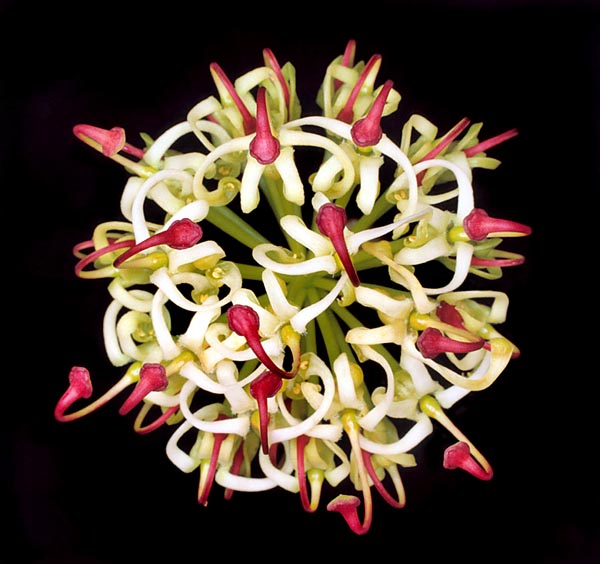Family : Proteaceae

Text © Pietro Puccio

English translation by Mario Beltramini

Grevillea gordoniana is a 2,5-7 m shrub with marvellous subglobose inflorescences © Giuseppe Mazza
The genus is honoured to the English collector Charles Francis Greville (1749-1809), who was one of the founders of the Royal Horticultural Society; the species is honoured to the Australian horticulturist David Morice Gordon (1899-2001).
The Grevillea gordoniana C. A. Gardner (1964) is an erect shrub or small tree, 2,5-7 m tall, with generally simple leaves, rarely bi- and tri-parted, cylindrical, 10-35 cm long and of 1-1,5 mm of diameter, of grey-green colour.
Axillar or terminal inflorescences, erect, often emerging from the crown, ramified, the single racemes are sub-globose with numerous hermaphrodite flowers with curved yellow to orange tepals and style of the same colour, tending to the red on the back.
The fruits are erect follicles, obovoid, 2,3-2,8 cm long and slimy. It reproduces by seed in sandy loam kept humid, at the temperature of 20-22 °C.
Little diffused and known species outside its natural habitat, cultivable in full sun, in the warm temperate climate zones, characterized by mild winters and warm and dry summers, on particularly draining soils, preferably sandy, slightly acidic to slightly alkaline.
It is not resistant to the fire, having no lignotuber, the upper part of the root, enlarged and lignified, which allows the plant to regenerate after a fire, its survival is therefore linked to the seeds whose germination is favoured by such circumstance.
→ Please look also the article about genus Grevillea.
